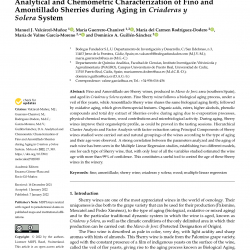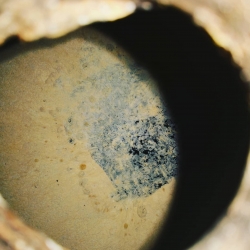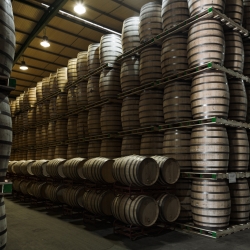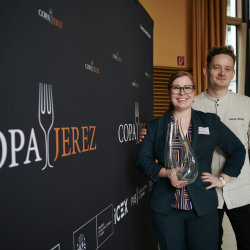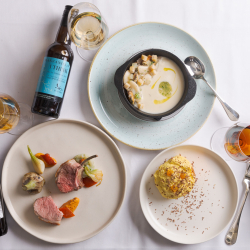Champagne & Jerez
We have just returned from another trip to the home of the wines of the Marco de Jerez. This region and its wines have captured our hearts, just like what happened in Champagne, and there is a growing need to repeat the journey and delve more deeply into these magical wines every day.
Our specialisation in the world of Champagne means that when we go there we seek comparisons with other wines, and in the case of Jerez the search for similarities with Champagne is always the order of the day. During the trip it was a recurring theme among the different producers we visited. Today I would like to sum up the various common denominators which were mentioned, and I’m sure many of you could add some more.
Champagne and Jerez: so much in common
We are talking about two mythical wines of global significance, both with long histories. Unfortunately, their paths have taken different directions, Champagne being associated with glamor and in tremendous demand and with international success, while Sherry has suffered many crises which have caused it to be seen as mediocre, sold mainly from the shelves of supermarkets at ridiculously low prices, sometimes below cost. Attempting to explain why would fill many pages.
We are talking about two extreme wines, made in regions very far apart. Champagne is Europe’s northernmost quality wine producing region (along with the Mosel) with an extreme climate; rainy and very cold. Sherry on the other hand is made in the extreme south of Europe, where the rigours of the summer heat stamp a definitive mark on the viticulture and character of these wines.
The vineyard has been completely forgotten in both regions, with the accent put on the wineries and winemaking. Overexploitation with minimum yields of around 15,000 kg/ha and the indiscriminate use of chemicals is a theme which has been repeating itself. Luckily now in both Champagne and Jerez a new breed of small producers, who have studied and traveled to other wine regions, have taken into account the importance of the vineyard and are beginning to refocus on it. The results are very hopeful and I personally feel very drawn to them.
And talking of vineyards, one of the main things both regions have in common is the soil; in both cases chalk monopolises most of the region, “la Craie” in Champagne and “Albariza” in Jerez. Logically these chalky soils would make the organoleptic profile of these wines very similar.


Both wines have very particular production methods which definitively shape the character of the final product.
Both methods have similarities such as the long ageing period, which in the case of Champagne takes place in bottle after the second fermentation. During this period the so called “prise de mousse” takes place in which gas bubbles slowly integrate with the wine creating that creaminess which we love so much. Meanwhile, thanks to the autolysis of dead yeast cells, the wine gains all the complexity of aroma and flavour which characterises it. For their part, Sherry wines undergo what is usually an even longer period of ageing before going to market but in oak butts instead of bottles whether the wine is aged biologically under flor in the case of Finos and Manzanillas or oxidatively for long periods of time in the case of Amontillados, Palos Cortados and Olorosos.

A further very characteristic similarity is the blending of wines of different vintages and vineyards. Without doubt this is one of the elements which have defined the identity of Champagne, which for centuries has been made from a blend of different years, vineyards and grape varieties maintaining the consistency of each producer’s brand. In the case of Sherry this blend of different vintages is brought about using the unique system of criaderas and soleras (a system of conserving old wines, a variation of which is occasionally also used by some Champagne houses).
Yeasts play a leading role in both wines, be they in the form of lees (dead yeast cells) which remain in the bottle in the case of Champagne or in the form of “flor” (the yeast film on the wine’s surface) which gives biologically aged Sherries all their personality in Jerez. Further still, both wines are among the few in which the yeasts play a double role. Most wines only use yeast for the first and only fermentation.

Here we have the two wines which, in my modest opinion, both enhance and harmonise better with any dish on the table. The freshness which they encapsulate – each one by different means– and the sheer complexity of flavour brought about from each one’s individual winemaking processes make them the perfect wines for food.
The dominant role and commercial strength of the big bodegas, or “Grandes Maisons” in Champagne is a further connection between the two regions. These big firms virtually monopolise the market yet they own very little vineyard, most of which belongs to small growers. In both areas, however, a movement of small producers has begun to grow in recent years, and while their sales are very small, they are nevertheless bringing new richness, diversity and variety to the scene from which both wines are benefiting enormously.
All these common denominators are combining to begin the process of the twinning of the two principal towns of each region: Jerez and Reims. There will even be a meeting of minds from each of the regions to set up shared projects which will undoubtedly bring wonderful surprises.
After writing all this I got to thinking. What if we were to organise a day in Segovia soon, dedicated to discovering the links between both wines, bringing together producers from both places? Who would sign up? Who would be interested? Any ideas on the matter? Contact the guys on their blog if you are interested in this idea.
Published with permission by alavole.com read the original article here:
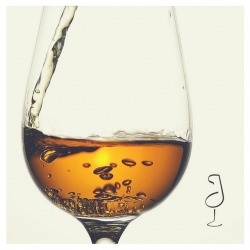

25 February 2017


